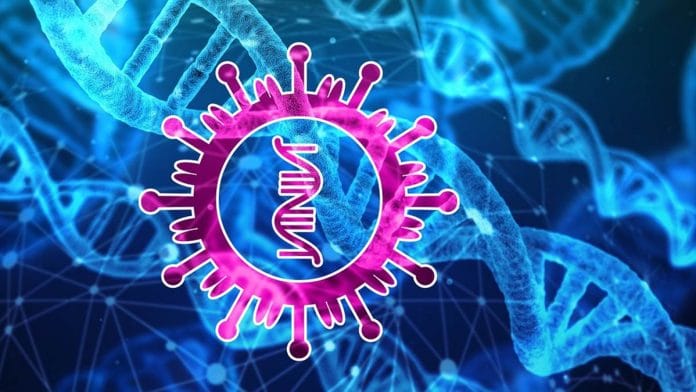New Delhi: A researcher from Seattle in the US has recovered deleted files from Google Cloud that reveal 13 early coronavirus sequences, for some of the earliest Covid-19 cases in Wuhan.
About a year ago, genetic sequences from more than 200 virus samples from Wuhan’s early cases of Covid-19 disappeared from an American online database, where they were stored on the request of Chinese researchers, US officials have confirmed.
In a statement Wednesday, the US National Institutes of Health (NIH) said the data that was initially submitted to the US-based Sequence Read Archive in March 2020 was requested to be withdrawn by the same researchers three months later in June last year.
The NIH also said the researchers had asked for the data to be removed to avoid “version control issues”.
“Submitting investigators hold the rights to their data and can request withdrawal of the data,” the agency said.
The NIH statement came a day after Jesse Bloom, virologist at the Fred Hutchinson Cancer Research Center in Seattle, released a report on the discovery of missing genetic sequences.
Also read: China’s Wuhan story unravels as world’s finest, including from India, nail Covid lab-leak proof
‘241 missing genetic sequences’
In his report released Tuesday, Bloom asserted that a team of Chinese researchers sampled the viruses from some of the first Covid-19 patients in Wuhan and posted the sequences on an US database, but these were later deleted to “obscure their existence”.
“It seems likely that the sequences were deleted to obscure their existence,” Bloom wrote in the report, which is yet to be peer-reviewed or published in a scientific journal.
The virologist claimed to have stumbled upon the missing data in the online database while reviewing genetic data published by different groups.
Bloom came across a March 2020 spreadsheet that included information on 241 genetic sequences collected at Wuhan University, and indicated that they were uploaded to the US managed database — Sequence Read Archive. But when he looked for the Wuhan sequences, the search result returned a message that read: “no items found”.
The spreadsheet indicated that 241 sequences were collected from Renmin Hospital in Wuhan by a scientist, Aisi Fu.
Bloom then found a study posted by Fu and his colleagues on medRxiv in early March of 2020, which was also published in a scientific journal later in June 2020.
Scientists part of this study said they looked at 45 nasal swab samples taken from “outpatients with suspected Covid-19 early in the epidemic”, but researchers didn’t publish the actual gene sequences but only some mutations in the viruses.
However, the report received criticism as many claimed the data has actually been publicly available all along.
It means that Dr. Bloom didn't unearth anything new.
He is discussing genomes that have been publicly known for more than a year and are described in Table 1 of the paper that Dr. Goldstein mentioned. https://t.co/Tlz6JzD4sc
— Nsikan Akpan, PhD (@MoNscience) June 23, 2021
Virus was circulating before 2019?
While the Joe Biden administration has been trying to ascertain the origins of Covid-19, Bloom’s study doesn’t strengthen or undermines the theory that it leaked out of a Wuhan lab. China has vehemently denied that the virus leaked from a lab.
The new report suggests the virus may have been circulating in Wuhan before the initial outbreaks in 2019 that have been linked to animal and seafood markets.
“I don’t think this bolsters either the lab origin or zoonosis hypothesis,” Bloom said in his analysis. “I think it provides additional evidence that this virus was probably circulating in Wuhan before December, certainly, and that probably, we have a less than complete picture of the sequences of the early viruses.”
The report added: “Phylogenetic analysis of these sequences in the context of carefully annotated existing data suggests that the Huanan Seafood Market sequences that are the focus of the joint WHO-China report are not fully representative of the viruses in Wuhan early in the epidemic. Instead, the progenitor of known SARS-CoV-2 sequences likely contained three mutations relative to the market viruses that made it more similar to SARS-CoV-2’s bat coronavirus relatives.”
Also read: Story of how ‘amateur sleuths’ forced world to consider Wuhan lab leak theory about Covid






